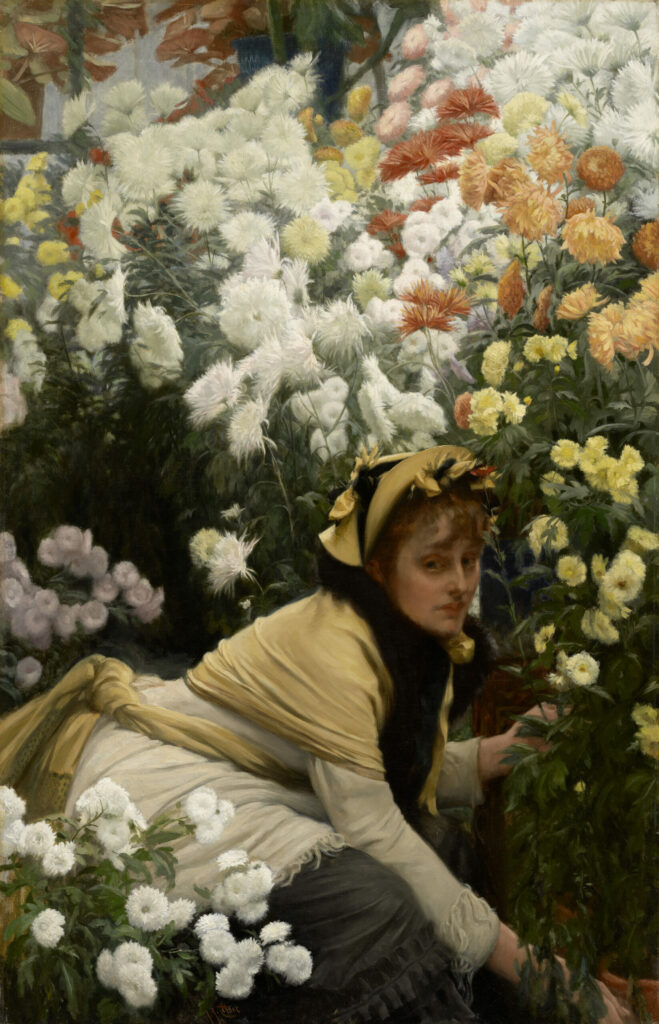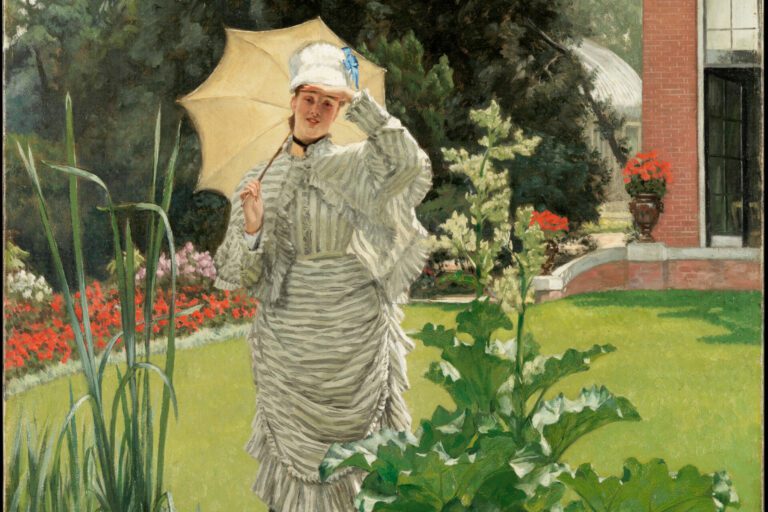
James Tissot envelops us in a winter conservatory where white, orange, and yellow chrysanthemums interweave in a dazzling chromatic symphony.
Within this botanical luxuriance, a young woman dressed in an elegant pale yellow shawl and light-colored gown tends to her flowers. Captured in the intimacy of daily routine, she bends to adjust a pot, her rolled sleeves revealing her domestic engagement. The bold composition, dominated by this profusion of blooms that nearly overwhelms the human figure, creates a compelling visual tension.
Set within the greenhouse adjoining the artist’s studio—evidenced by the glazed window visible in the upper left corner—the work establishes a subtle metaphor between the cultivation of exotic plants and Victorian society women, both carefully maintained within controlled environments, simultaneously protected and displayed.
Work Details
- Chrysanthemums by James Tissot, 1874-76
- Oil on canvas, 46 5/8 × 30 in. (118.4 × 76.2 cm)
- The Clark Art Institute, Williamstown
- https://www.clarkart.edu/ArtPiece/Detail/Chrysanthemums
James Tissot (1836-1902), a French painter who relocated to London following the Paris Commune, established himself as a sophisticated chronicler of British high society. His English period (1871-1882) proved particularly fertile, during which he developed an acute observation of contemporary manners and elegances. A master of textile rendering and interior description, Tissot displays an almost Impressionist sensibility in this work, combining technical precision with poetic atmosphere. The painting reflects his fascination with depicting women within their domestic spheres, subtly capturing the social codes of the Victorian era. His virtuosic treatment of the flowers—each petal rendered with stunning botanical accuracy—reveals an artist at the height of his powers.

